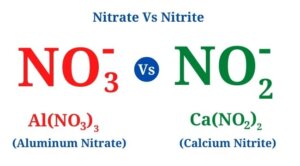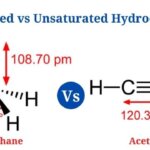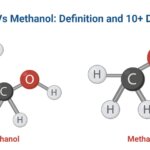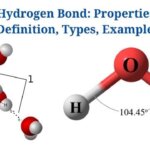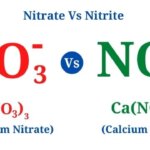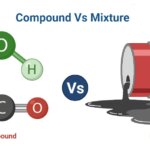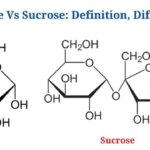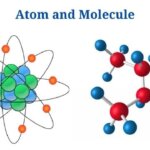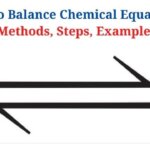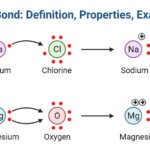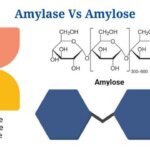Definition of Nitrate
Nitrate is a nitrogen oxoanion with a charge of -1, one nitrogen atom, and three oxygen atoms generated by the loss of hydrogen from nitric acid.
- It’s a polyatomic ion with the chemical formula NO3– that’s widely found in fertilizers and explosives in the form of salts.
- Nitrate is a conjugate base of nitric acid and is a monovalent inorganic anion. It can combine with a variety of metals to generate salts.
- The trigonal planar structure of the nitrate ion features a center nitrogen atom surrounded by three equally bound oxygen atoms.
- The ion’s total charge is -1, with each oxygen atom having a -2/3 charge and nitrogen having a +1 charge.
- Because the nitrogen atom in the molecule has an oxidation state of +5, nitrates can operate as oxidizing agents.
- Nitrates, which are found in the form of inorganic nitrates in leafy vegetables, are also necessary in the diet of living things. Nitrates can also be found in drinking water.
- Nitrate salts are found in deposits and rocks all over the world. Nitrifying bacteria create these from nitrogen molecules.
- Because of their great solubility and biodegradability, nitrates are most commonly used as fertilizers in agriculture.
- Nitrates are utilized as oxidizing agents in the manufacturing of metal products in industries.
- Nitrates include sodium nitrate, aluminum nitrate, magnesium nitrate, and other metal nitrates.
Definition of Nitrite
Nitrite is a nitrogen polyatomic anion created when hydrogen atoms from nitrous acid are lost, leaving one nitrogen atom and two oxygen atoms.
- During the oxidation of ammonia to nitrate, nitrites are typically formed as intermediate intermediates.
- Nitrite has the chemical formula NO2– and is the conjugate acid of nitrous acids, HNO2.
- However, the term nitrite can also refer to chemical molecules that include the –ONO group and are nitrous acid esters.
- Because the nitrogen atom in the molecule has an oxidation state of +3, nitrites can operate as both oxidizing and reducing agents.
- The nitrite ion’s structure is bent, having an O-N-O bond angle of roughly 120°C.
- The ion has a symmetrical structure with identical lengths and bond angles for both N-O bonds. The ion has a resonance hybrid because it exists in two separate forms that are mirror reflections of each other.
- In the presence of nitrifying bacteria, nitrite is converted to nitric oxide or ammonia, making it an important intermediary in the nitrogen cycle.
- It’s also utilized in diazotized azo dyes and other colorants. Some nitrites, such as sodium nitrite, are used to preserve food.
- Nitrite levels in food and water samples that exceed the recommended amounts can cause a variety of ailments in humans. N-nitrosamines are formed when nitrates are consumed in the diet, and they are known to induce stomach cancer.
Key Differences between Nitrate and Nitrite
(Nitrate Vs Nitrite)
Nitrate Examples
Magnesium Nitrate
- Magnesium nitrate (Mg(NO3)2) is an inorganic magnesium nitrate salt with the chemical formula Mg(NO3)2.
- Magnesium nitrate is a hygroscopic material that produces hexahydrate fast in the presence of moisture. Mg(NO3)2.6H2O is the hygroscopic form of the chemical.
- It occurs as a white crystalline solid that, when burned, emits deadly nitrogen oxides.
- Although it can be collected naturally from mines and caves, commercial magnesium nitrate is made by reacting nitric acid with magnesium ions.
- Alkali nitrates are formed when magnesium nitrate combines with alkali metal hydroxides.
- Because magnesium nitrate is hygroscopic and has a strong affinity for water, it decomposes into magnesium oxide, oxygen, and other oxides when burned.
Nitrite Examples
Sodium Nitrite
- Sodium nitrite has the chemical formula NaNO2 and is an inorganic sodium salt.
- It’s a yellowish-white crystalline substance that’s employed as a food preservative.
- It is non-combustible on its own, but it has the potential to speed up the combustion of other materials. However, in big concentrations, it may cause fire and explosions.
- Sodium nitrite is the most common nitrite salt and has a wide range of industrial applications.
- It’s used in a variety of items, including medicines, colors, and fertilizers, but it’s most commonly employed as a food additive.
- Despite its industrial usefulness, it can be fatal to humans if taken in excess of 71 mg/kg.
- Sodium nitrite, which does not occur naturally in vegetables, has been found in high concentrations in such goods as a result of its usage as a fertilizer.
Nitrate Vs Nitrite Citations
- Gautum SD, Pant M and Adhikari NR (2016). Comprehensive Chemistry, Part 2. Sixth Edition. Heritage Publishers and Distributors Pvt. Ltd
- National Center for Biotechnology Information. PubChem Compound Summary for CID 25212, Magnesium nitrate. https://pubchem.ncbi.nlm.nih.gov/compound/Magnesium-nitrate. Accessed Mar. 26, 2021.
- National Center for Biotechnology Information. PubChem Compound Summary for CID 23668193, Sodium nitrite. https://pubchem.ncbi.nlm.nih.gov/compound/Sodium-nitrite. Accessed Mar. 26, 2021.
- https://www.differencebetween.com/difference-between-nitrate-and-vs-nitrite/
Related Posts
- Dissecting Microscope (Stereo Microscope) Definition, Principle, Uses, Parts
- Saturated vs Unsaturated Hydrocarbons: Definition, Differences, Examples
- Ethanol Vs Methanol: Definition and 10+ Differences
- Hydrogen Bond: Properties, Definition, Types, Examples
- Nitrate Vs Nitrite: Definition, Differences, Examples
- Aromatic Compounds vs Aliphatic Compounds: Definition, Differences, Examples
- Compound Vs Mixture: Definition, Differences, Examples
- Elements Vs Compounds: Definition, Differences, Examples
- Molecules Vs Compounds: Definition, Differences, Examples
- Hard water Vs Soft water: Definition, Differences, Examples
- Glucose Vs Sucrose: Definition and Key Differences
- 13+ Difference Between Atom and Molecule with Examples
- How to Balance Chemical Equation: Methods, Steps, Examples
- Ionic Bond: Definition, Properties, Examples
- Amylase Vs Amylose: Definition, Differences, Example

